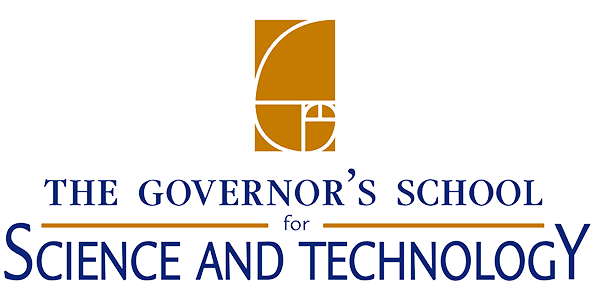Advanced Biological Analysis
Advanced Biological Analysis (4371): (2 weighted high school science credits)
In the fall semester, topics in the field of cell and molecular biology will be addressed, some of which include the roles of biological macromolecules, cellular organization and metabolism, and cellular processes such as communication, reproduction, respiration, and photosynthesis. In addition, mechanisms of inheritance and control of gene expression will be examined, followed by a study of developments in biotechnology. In the spring semester, evolution, phylogeny, and the diversity of living things will be discussed, with a special focus on the anatomy and physiology of plants and animals. The laboratory experience is a major component of the course, allowing students the opportunity to use technologies applied in research as well as medical and forensic laboratories while designing their own experiments and analyzing and interpreting their results. The anatomy and physiology of various vertebrate organ systems will be compared while dissecting animals in the laboratory. Advanced Biological Analysis is a college-level course that examines the topics typically studied during the first year of college by biology majors. Prerequisite Advanced Chemical Analysis.
Calculus-based Engineering Physics I & II: Mechanics to Electromagnetism
Calculus-based Engineering Physics I & II: Mechanics to Electromagnetism (4571): (2 weighted high school science credits)
Junior Year Physics 1 Syllabus 2024-2025
Senior Year Physics 2 Syllabus 2024-2025
This is a mathematical rigorous course that investigates the principles of classical mechanics, gravitation, periodic motion, electric and magnetic field theory, AC and DC circuit theory, geometric optics through in-depth discussion, concept development, and inquiry-based experimental laboratory activities. The course also develops problem solving skills which emphasize the importance of inquiry in science and integrates the overarching themes of conservation and symmetry. Laboratory experiments use apparatuses such as dynamic tracks, ballistic pendulums, and different LabPro sensors to investigate fundamental physics theories and mathematical concepts. Computer data acquisition software is utilized to collect, analyze, and graph experimental data. The course encourages hands-on activities, class participation, and students taking responsibility for their own learning. Students will be provided many opportunities throughout the course to design and carry out investigations and to analyze and evaluate data. Learning fundamental principles, generalizations, model building and the ability to apply course material to improve thinking, problem solving, and decision making are essential general goals. Gaining factual knowledge and developing specific skills, competencies, and points of view needed by professionals are important general goals. Co-requisite: Enrollment in GSST College Calculus Course.
Computational Physics
Computational Physics (4525): (2 weighted high school science credits)
Computer Science Course objectives provide a study of the key concepts in object-oriented programming (Java / Python) and design (data abstraction, data encapsulation, composition, inheritance and code re-use and implementation design techniques), programming constructs (primitives, references, classes, methods and interfaces), evaluating expressions (numeric, string and Boolean), program analysis (testing, debugging, run-time exceptions, pre and post conditions, assertions, analysis of algorithms and numerical representation of integers), data structures (strings, lists, one and two dimensional arrays and their accompanying operations – traversals, insertion and deletion), searching (sequential and binary), sorting (selection, insertion and merge sort) and develop an understanding of the ethical and social issues as it relates to the study of Computer Science. The course is a non-calculus treatment of physics dealing with topics in classical and modern physics. Physics course objectives apply the equations of kinematics to predict the position and the velocity at a later time, Newton’s laws of motion to find the acceleration of the objects and to identify other forces in the system, the conservation laws (mechanical energy conservation, and momentum conservation, and angular momentum conservation) to compare the system before and after the interaction, find the solutions of problems involving rectilinear motion, parabolic motion, circular motion, & objects in equilibrium, apply the conservation laws to the solutions of problems involving collisions, conservative and non-conservative forces, understand the fluid mechanics, such as buoyant force and Bernoulli’s equation, solve problems involving thermal expansion, heat transfer, thermodynamic processes & the behavior of ideal gases. Second semester course focuses on fundamental principles of physics covering mechanics, thermodynamics, wave phenomena, electricity and magnetism, and selected topics in modern physics. Prerequisites Algebra II/Trig.
Computation Science: Engineering Design, Innovation & Entrepreneurship
Computation Science: Engineering Design, Innovation & Entrepreneurship (4550): (2 weighted high school science credits)
Learning fundamental knowledge of design innovation and science disciplines and the requisite skills to perform research, problem-solve, innovate, and create opportunities in the real world are the overarching goals of this course. The course includes also a series of project-based learning experiences to help the student acquire and apply the skills, tools, and best practices of the STEM profession. Learning tools include, for example, industry standards and research modeling and simulation software, hands-on design and troubleshooting of solid state systems, and industry standard computer-aided-design software, and additive manufacturing fabrication systems. In challenging keystone projects, students are tasked to identify real-world engineering problems or opportunities, to propose and seek client approval for their unique solutions or innovations, then to design, build, and demonstrate their final products. The keystone experiences include professional engagement with research leaders invited from community organizations such as NASA, SNAME, and the Jefferson Labs. Prerequisites: Computational Physics and Pre-Calculus.
